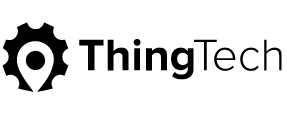Fleeting Moments in IoT: Part 3, What Happens Next?
Before the Internet of Things, your business was operating on historical data. Now, all of a sudden, you have a stream of real-time data, the value of which can only be realized through IoT-driven automation. Keeping an omnipresent eye on vehicles and field workers can be a huge cost-saving, game-changing innovation for your company. But there are more benefits and opportunities out there. In Part 2 of this series, we asked readers to answer this question: what are my IoT goals? Now that your fleet management system is up and running, the question now becomes: what do I do with all this data?
Fleet management systems can generate enormous streams of data. Without a sense of what to monitor, measure, and manage, big data becomes noise for managers to cut through. When it comes to data, it’s not how much you collect, it’s what you use and how you use it. Of course, it’s hard to ignore the low hanging fruit—cutting costs by improving average miles per gallon, route optimization, etc. But a more efficient use of the IoT is applying analytics and data models to uncover patterns and intelligence you can act on.
Consider trucking, an industry contending with growing regulations around logging hours of service (HOS). The government’s quest to make roads safer produced the ELD Mandate, requiring truckers to prepare HOS records with electronic devices. One way to determine the value of the ELD rule is by asking this question: does it make trucking companies better?
On one hand, it’s predicted that the trucking industry will save annually nearly $2 billion per year in paperwork, $365 million in crash reduction costs, and hundreds of injuries resulting to crashes. Then again, the ELD rule creates a disadvantage for smaller businesses whose costs for ELD hardware, software, and data plans will likely exceed cost savings on fuel and paper in the short run.
We believe that fleet management solutions, such as ELD devices, make trucking companies better. But these are only a gateway to digital transformation. The next step in your IoT journey is putting your data to work. ThingTech brings together smart devices, mobile applications, powerful APIs, and a flexible Salesforce cloud that enables IoT deployments to scale efficiently.
With ThingTech on board, your IoT platform can gather information from the field and feed it to any department that needs it. Customers will experience optimal service levels. Drivers paid by the mile will have the tools and information they need to maximize safety and earnings. Maintenance managers will be pleased that predictive maintenance schedules keep vehicles running better and longer. The finance team will be thrilled as costs for replacement parts decrease due to better tracking of warranties. And executives will extol your growing repository of data models, which provide insight and predictability into the relationship between IoT data (historical and real-time) and the organization’s progress toward its goals.
Changing the future happens today. Contact us at thingtech.com/contact-us anytime to discuss your IoT platform needs, or to schedule a free demo.

